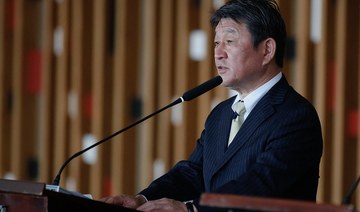TOKYO: United Arab Emirates President Sheikh Mohamed bin Zayed Al Nahyan had a telephone conversation with Japanese Prime Minister KISHIDA Fumio on Tuesday and emphasized the importance of cooperation to stabilize the international oil market.
A statement from Japan’s Ministry of Foreign Affairs reported that Kishida congratulated Sheikh Mohamed on his appointment as President and stated that UAE is a strategic partner for Japan. Kishida added that he hopes to foster closer ties with the President.
Kishida expressed his appreciation for the UAE’s stable supply of crude oil to Japan. The two leaders confirmed that cooperation between Japan and the UAE towards the stabilization of the international oil market is crucial for realizing a decarbonized society, as well as further promotion of realistic energy transition and climate change countermeasures.
Prime Minister Kishida stated that Japan appreciates UAE’s leadership in realizing net zero by 2050. In response, Sheikh Mohamed expressed his appreciation for Japan’s support and stated that UAE is committed to closely cooperating with Japan.
The two leaders confirmed they would continue to strengthen the strategic partnership between Japan and UAE in various fields, especially as 2022 marks the 50th anniversary of the establishment of diplomatic relations between Japan and the UAE.
Japan and UAE expressed their intention to cooperate on other matters, especially as the two countries will have an overlapping term on the United Nations Security Council in 2023.
Prime Minister Kishida expressed his appreciation for a condolence message from Sheikh Mohamed on the passing of former Prime Minister Shinzo Abe. Sheikh Mohamed stated that the demise of former Prime Minister Abe was heart-breaking.






















